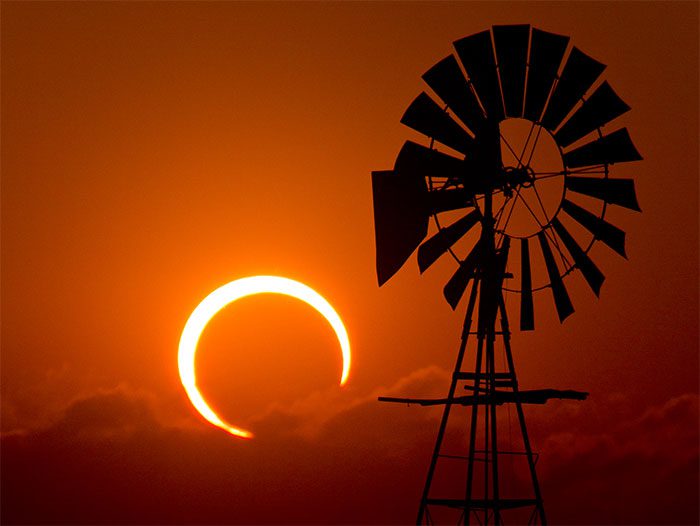On October 14, a spectacular annular solar eclipse, known as the “ring of fire,” will sweep across North America, and many people may only have the chance to witness it once in their lifetime in certain states of the U.S.
The “ring of fire” or annular solar eclipse will be visible from 8 states in the U.S. on October 14 of this year.
During the event, skywatchers throughout North, Central, and South America will see a partial eclipse lasting about three hours, but the ring of fire will only be visible for a few minutes.

Solar eclipse in Texas in 2012.
Annular Solar Eclipse
The annular solar eclipse is different from a total solar eclipse, which will take place on April 8, 2024, in Mexico, the U.S., and Canada.
“These are two completely different experiences,” said Jayne Aubele, a senior educator at the New Mexico Museum of Natural History and Science, when discussing the upcoming annular solar eclipse.
She added: “With the annular solar eclipse, you do not see darkness, cooler temperatures, or the ‘black hole effect,’ but what you get is a very remarkable ‘ring of fire’ in its true sense.”
The annular solar eclipse occurs when the Moon passes in front of the Sun while being farther from the Earth in its elliptical orbit.
During this eclipse, the Moon will cover up to 91% of the Sun, but not completely—so everyone should wear eclipse glasses while viewing the event at all stages.
The path of the annular eclipse will begin in Oregon and pass through Northern California, Nevada, Utah, northeastern Arizona, southwestern Colorado, New Mexico, and Texas before moving over the Yucatán Peninsula in Mexico, Belize, Honduras, Nicaragua, Panama, Colombia, and Brazil.
“The ring of fire” can be seen for a maximum of 4 minutes and 29 seconds to 4 minutes and 52 seconds in the U.S., meaning that those inside the “annular path,” which is 201 to 220 km wide, will have the best views.
Angela Speck, an astronomer at the University of Texas at San Antonio, stated: “It is important where you are; if you are near the center, you will see this phenomenon longer than if you are at the edge.“
Many U.S. States Will Have Clear Views
The longest “ring of fire” will be visible from Padre Island on the Texas coast. Those standing at the southern or northern borders of the U.S. will see the ring of fire’s light for only a second, although only from those positions can they view Baily’s beads, or the shimmering rays of light.
The eclipse’s path will traverse many remote areas of the Southwestern U.S., including Crater Lake National Park in Oregon, the Great Basin in Nevada, and Bryce Canyon in Utah. The largest cities along its path will be Albuquerque, New Mexico (coinciding with the final day of the annual Albuquerque International Balloon Fiesta) and San Antonio, Texas.
The Southwestern U.S. is cool and even chilly in mid-October, especially at night. The annular solar eclipse event is expected to attract many tourists to witness it firsthand. Those who cannot travel to see the “ring of fire” will have numerous websites streaming the event live, including the Exploratorium in San Francisco and the reliable www.timeanddate.com.


















































